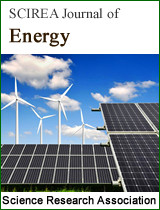EMPIRICAL APPROACH FOR GAS TURBINE EMISSIONS TAX EVALUATION
DOI: 10.54647/energy48088 141 Downloads 14924 Views
Author(s)
Abstract
Gas turbine engine are one of the major prime movers used in industry and aviation to produce energy and power. However, a major limitation of gas turbine engines, in relation to climate change, is that they are mostly powered by fossil fuels which when burnt, release emissions in varying amounts into the atmosphere. Growing evidence worldwide, suggests that emissions from fossil fuels could be a major contributor to global climate change. As a result, various emission policies and goals, aimed at mitigating the effect of climate change are on the increase. Current trends in emissions policies tend towards potential for future taxation of emissions by any system capable of generating emissions. Therefore, current technologies, systems and procedures must be ready for potential changes in future economic climate due to changing environmental policies.
In this study, an emissions model is developed which evaluates the emissions generated and any potential emissions tax payable on emissions generated by a gas turbine engine over an operating horizon. The developed approach applies gas turbine information on fuel type, considered emissions and adopted emissions control to estimate the amount of emissions generated by a gas turbine. As a validation to the estimating methodology, the developed emissions model is applied to evaluate the known emissions rate for some gas turbines. Comparison of emissions model estimates with recorded values from the U.S. department of energy and the California energy commission reveal a difference of less than 3%.
Keywords
Gas Turbine, Emissions model, Emission rate, Empirical modelling
Cite this paper
David Olusina Rowlands, Mark Savill,
EMPIRICAL APPROACH FOR GAS TURBINE EMISSIONS TAX EVALUATION
, SCIREA Journal of Energy.
Volume 6, Issue 1, February 2021 | PP. 21-41.
10.54647/energy48088
References
| [ 1 ] | HM Revenue and Customs, “Carbon Emissions Tax Supporting Document,” HM Revenue and Customs, London, 2019. |
| [ 2 ] | D. O. Rowlands and M. Savill, “Economic Modelling and Evaluation of a Repurposed Gas Turbine Engine,” Florida, USA, 2018. |
| [ 3 ] | Texas Commission on Environmental Quality, “Introduction to Air Quality Modeling: Emissions Modeling,” Texas Commission on Environmental Quality, Texas, 2018. |
| [ 4 ] | D. Allaire, I. Waitz and K. Willcox, “A Comparison of Two Methods for Predicting Emissions from Aircraft Gas Turbine Combustor,” Massachusetts Institute of Technology, Massachusetts, 2007. |
| [ 5 ] | M. A. Soroudi, S. Montazerinejad, E. Mollahassanzadeh, S. Rezayat and M. Shahsavari, “Prediction of NOx Emissions in an Industrial Gas Turbine Combustor Using Large Eddy Simulation and Reactor Network Modeling,” Journal of Fuel and Combustion, vol. 11, no. 2, pp. 91-117, 2018. |
| [ 6 ] | U. Honegger, “Gas Turbine Combustion Modelling For A Parametric Emissions Monitoring System,” Kansas State University, Kansas, 2007. |
| [ 7 ] | R. Meloni, “Pollutant Emission Validation of a Heavy-Duty Gas Turbine Burner by CFD Modeling,” Machnines, vol. 1, pp. 81-97, 2013. |
| [ 8 ] | M. İlbaş and S. Karyeyen, “Modelling of combustion performances and emission characteristics of coal gases in a model gas turbine combustor,” International Journal of Energy Research, vol. 38, p. 1171–1180, 2013. |
| [ 9 ] | ONSITE SYCOM Energy Corporation , “Cost Analysis of NOx Control Alternatives for Stationary Gas Turbines,” U.S. Department of Energy, Chicago, 1999. |
| [ 10 ] | California Energy Commission, “El Segundo Power Redevelopment Project (ESPR) - Detailed Gas Turbine Emissions Calculations A1 Air Emission Data,” California Energy Commission, California USA, 2007. |
| [ 11 ] | D. Rowlands, “Techno-Economic Research Analysis for Effective Power Generation from Aero-Engines with Minimal Emissions,” Cranfield University, Cranfield, 2018. |
| [ 12 ] | S. Karsoliya, “Approximating Number of Hidden layer neurons in Multiple Hidden Layer BPNN Architecture,” International Journal of Engineering Trends and Technology, vol. 3, no. 6, pp. 714 - 717, 2012. |
| [ 13 ] | G. Thompson, “Statistical literacy guide 1- How to adjust for inflation,” House of Commons Library, Westminster , 2009. |
| [ 14 ] | Pequot Publishing Inc, “Competitive Bids and Orders,” Gas Turbine World, Vols. 1-34, no. 1-6, pp. 5-49, January - Decemeber 1973 - 2005. |
| [ 15 ] | Pequot Publishing Inc, Gas Turbine World Handbook, Southport: Pequot Publishing Inc, 1973-2017. |
| [ 16 ] | Business Journals, Inc., Turbomachinery International, Norwalk: Business Journals, Inc., 1975-1977. |
| [ 17 ] | U.S. Bureau of Labor, “Statistics, U.S. Bureau of Labor Statistics- Databases, Tables & Calculators by Subject,” U.S. Bureau of Labor, Washington, DC, 2017. |
| [ 18 ] | Forecast International, “Industrial Trent 60 / MT30 Marine Engine,” PowerWeb - A Forecast International Inc. Subsidiary, Newtown, USA, 2018. |
| [ 19 ] | General Equipment, Prattand Whitney FT4 Proposal, North America: General Equipment, 2013. |
| [ 20 ] | Gas Turbine International, “Latest News - General Electric Sells,” Sawyer's Gas Turbine International, vol. 18, no. 4, p. 56, 1977. |
| [ 21 ] | Power Engineering International, “Gas and Steam Turbine Technical Data,” PennWell Corporation, Tulsa, 2013. |
| [ 22 ] | United States Environmental Protection Agency, AP 42, Fifth Edition Compilation of Air Pollutant Emissions Factors, Volume 1: Stationary Point and Area Sources, Chapter 3: Stationary Internal Combustion Sources, 5th ed., North Carolina, USA: United States Environmental Protection Agency, 1995. |

